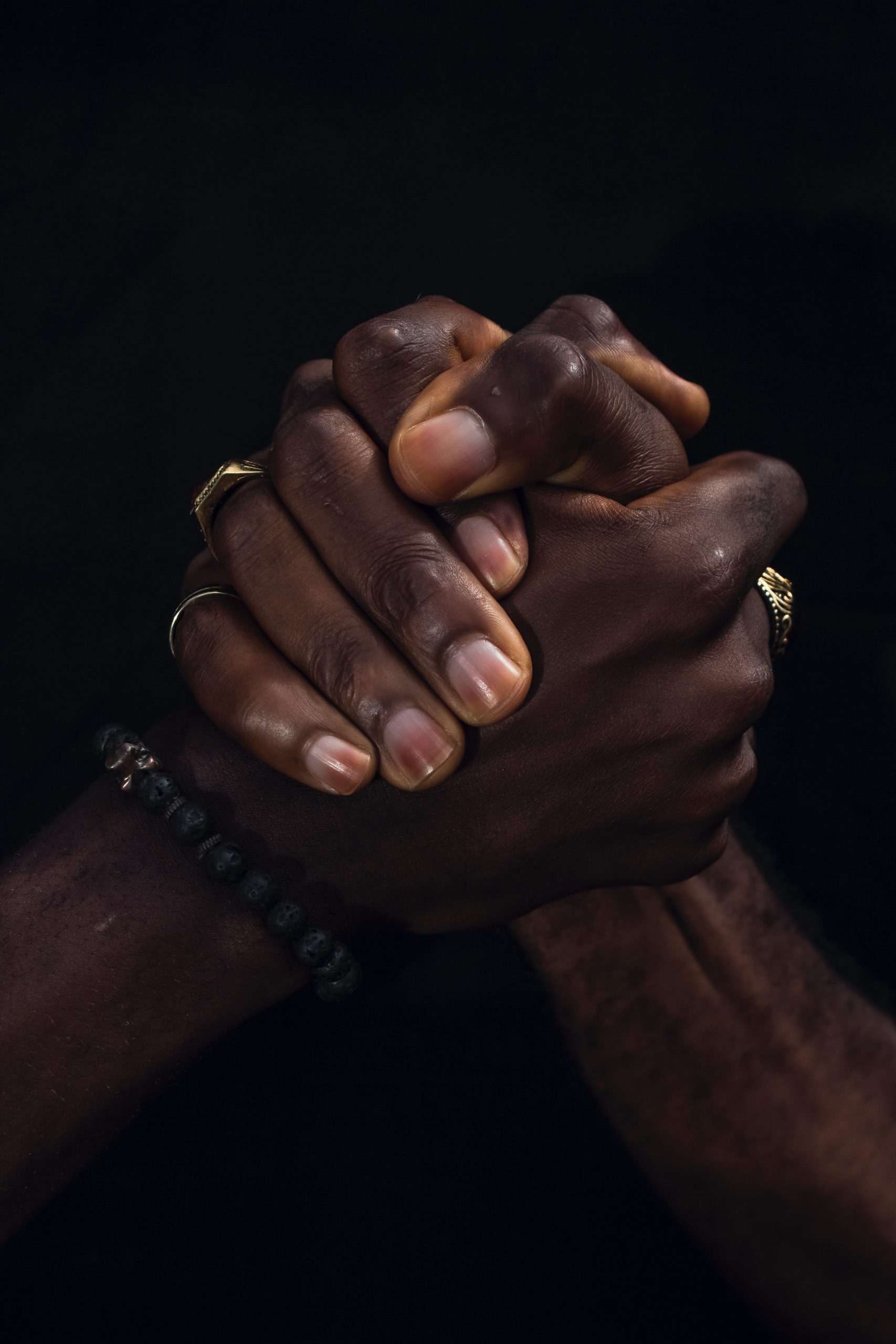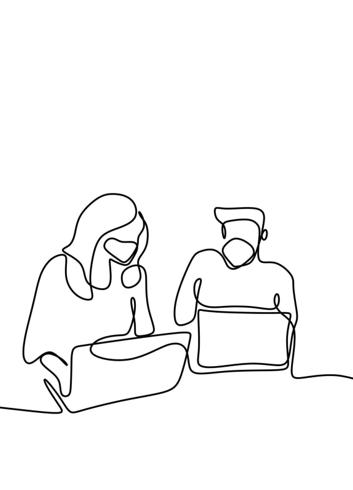
The Problematic Management of Corpses in Cameroon During the COVID-19 Crisis
By: Jade Payan, Project Manager for Econogy Project
Translated by: Noemi Amelynck, Head of Research for Econogy Project
It is certain that the measures and protocols adopted to combat the spread of COVID-19 have provoked a reaction from the Cameroonian population as they became unsure on whether they would be able to continue the practice of their traditions and cultural rites.
The challenge is to understand the interweaving of these response strategies with such tradition. In some cases, Cameroonian cultures has made it possible to carry out and support these strategies. However, in other situations, these two dynamics have been put in opposition and has even led some authors to speak of “psychological and cultural violence.”[1]
One of the cases illustrating the cultural resistance of the Cameroonian population has to do with the management of corpses during the health crisis. The context of the COVID-19 pandemic has caused a clash between traditional practices and compliance with the health management protocols. In other words, a confrontation that opposed dignity and security.
The customs and traditions that surround funerals in Cameroon have faced administrative trial and error by the government to define the practice for the burial of COVID-19 victims, which caused incessant conflicts during the crisis. Could these conflicts have been avoided? What does the COVID-19 pandemic teach us about the management of corpses in Cameroon?
Customs and Traditions Surrounding the Burial of the Dead in Cameroon
The burial process and funerals in the Cameroonian tradition follow the codes of a culture far removes from traditional “Western” funerals. The Cameroonian ceremonies have both a social and symbolic meaning.[2] The difference in perception is due to the interpretation of death among different communities as death is not understood as the cessation of life, but as a “mutation” and “change of world”.[3] In the communities of western Cameroon, for example, the death of individual marks a process of continuity and resurrection made possible my funeral rituals by opening “from death, a corridor towards divinity”.[4] Moreover, the protection emitted thanks to the purification rites is twofold: not only is it exerted on the soul of the dead in the processes of passing to the other world, but it also makes it possible to protect the living from the powers that this future “ancestor” could exert on them.[5]
These beliefs explain the importance of performing funeral ceremonies and associated rites for some Cameroonian communities. They also highlight the inadequacy of this culture with French civil law inherited from colonisation.
Under French law, “the corpse is not a person, neither surviving nor continuing as its own person as the deceased”.[6] In this sense, the mortal remains are considered by the doctrine as just an “object”. This objectification does not prevent him from conferring on him the attributes of a person, nor from granting him a certain level of respect.[7] The fact is that the corpse remains an object of little consideration and its legal rights, which provides it status, has been stripped at the time of death.
As noted earlier, the African and Cameroonian customs breaks with this vison. This is why African metaphysics, built on the cult of life, strength and ontological enshrined during the policymaking process, policymaking militates in favour of the elaboration of a specific legal status for the corpse as it remains a man.[8] In this sense, it seems that the legal constructions established by certain French jurists which characterise the body as a “deceased person” is more suitable.[9] This categorisation could make it possible to treat these remains at least as incapacitated persons who can act through a representative chosen among family members.
However, in the current state of the law, such considerations have no basis. Thus, in Cameroon, the rules of burial and standard operating procedures for the management of corpses in the context of an epidemic are contained in Decree 74/199 of March 14th, 1974, which regulates burial operations, exhumation and the transfer of corpses. This decree defines protocols for the management of people who died of contagious disease and sets a time limit for exhumation if necessary, leaving it to press releases, recommendations and notices to specify certain methods without these being able to contravene the indications that it contains.
The Administrative Trial and Error of the Cameroonian Government on the Management of Bodies: a source of permanent conflict during the pandemic
It is in the context of the COVID-19 crisis that multiple conflicts existed between families and hospitals in charge of applying these measures prescribed to them for the management of contaminated bodies arose.
While the special declaration of March 17, 2020 set out the thirteen measures of the Cameroonian government response strategy, it did not contain any indication as to the management of the remains of people who dies as a result of COVID-19.[10] What was observed in the country was the systematic cases of confiscation of corpses buried in public cemeteries without the performance of any funeral rite. Such confiscations had significant consequences for the population as they experienced “terrible psychological dramas”.[11]
Anxious to regulate these practices, the Prime Minister, in a press release released on April 23rd, 2020, instructed the Minister of Territorial Administration in conjunction with the Minister of Public Health “to ensure that people who died as a result of the coronavirus are buried in their localities of death”.[12] This resulted in two interpretive measures: on the one hand, the prohibition of any inter-city transfers of remains, and, on the other hand, the immediate burial of the coffins which was in opposition to the custom of preserving the bodies in the morgue for one or more days. This press release took place in an already turbulent context as the Minister for Decentralisation and Local Development had reported the day before in an instructed intended for the municipal authorities cases of corruption by certain authorities and collaborators in charge of the management of municipal cemeteries.[13] This entailed large sums of money to the relatives of the deceased in order to make space available in these cemeteries to be able to bury their relatives.
However, these recommendations have not made it possible to appease the conflicts. Cases of concealment of the sick due to the fear or not being able to dispose of them in the event of death, violence against health personnel or even attempts to exhume the bodies have been regularly reported. Such events are corroborated, in particular, by the staff of Saint Jean Hospital in Malta. Emmanuel Sanama, mortuary of the hospital, testifies with sadness of the many conflict situations that he had to manage: “there were fights, even the director was jostled”.
Following the scientific council of May 20th, the Prime Minister’s attempt to appease the situation were not successful.[14] During these meetings, the council made a long argument about the risks associated with preventing families from carrying out burials according to their customs, stating that:
“These burials are considered sloppy and humiliating in the light of various traditions […], that death from COVID-19 stigmatises families who may use denial to safeguard their ‘honour’, and that others are bound by strong family and socio-anthropological loyalties that command them to ensure a dignified burial for their parents as a moral duty deemed to have an impact on their personal and social future.”
This is followed by a description of the provisional WHO guidelines of March 24th, 2020 relating to the conduct to be followed in the fight against the virus for the safe management of the body of a deceased person in the context of COVID-19, which provide relatively broad recommendations:
“There is no evidence of contamination due to exposure to a deceased person. Disinfection of the body before transmission in the mortuary, the use of a body bag without any abundant flow of biological fluid, and the use of a vehicle or equipment special transport is not necessary… The family can be authorised to see and gather in front of the body without touching it, in compliance with standard precautions… The dignity of the deceased, their cultural and religious traditions [must] be respected and protected through the care process, […], hasty disposal of the body of a person who has died of COVID-19 must be avoided, […], if a ceremony is organised, the number of participants must be restricted to the number authorised by the regulations provided for in response to COVID-19”.
However, the conclusions drawn by the council remain strict. The burial of the bodies must occur within a period not exceeding 48 hours, while the transfer of the remains outside the city where the death occurred is prohibited. Nevertheless, certain exceptions exist. The manipulation and burial of the body must be carried out by a technical personnel trained and protected in accordance with standard procedures; families duly informed beforehand of the cause of death are authorised to see the body, without any physical contact, before placing the body in the coffin; attendance to the burial must be done in limited numbers, in compliance with precautionary measures; the bodies can be buried with respect for human dignity; and their cultural and religious traditions can occur without any physical contact.
This notice, the application of which was ensured by the publication of a radio-press release on June 16th, 2020, received a mixed reaction from the public with families remaining devasted by the impossibility of burying their deceased in their villages.[15]
This observation raises the question of the appropriateness of such measures with regard to the risk incurred.
The Question of the Advisability of Implementing Such Protocol: “what if we let the families bury their dead?”[16]
What is the risk faced with the remains of a person who dies from a COVID-19 infection which justifies the implementation of such protocols governing the burial of bodies? In reality, as the WHO indicates in the above-mentioned recommendations, “only the lungs can be contagious if they are not handled correctly during an autopsy. Otherwise, corpses do not transmit the disease.” Moreover, it seems that only one case of contamination following the handling of a contaminated corpse has been reported in Thailand.[17]
This observation questions the risk incurred when participating in funeral celebrations which follow the burial of the deceased – the danger of which is not called into question.[18] These gatherings occur regardless of the cause of death, which raises the question of the relevance of a framework targeted at COVID-19 cases when deaths linked to other causes continue to be managed by families, often in defiance of social distancing measures.
In addition, it is clear that the measures related to the burial of bodies within 48 hours and the ban on the transfer of the body are difficult to apply. Emmanuel Sanama testifies: “Regarding the respect of the 48-hour deadline for the burial of the bodies, we encountered difficulties… How could we ensure this when the diagnosis of the cause of death exceeds this 48-hour period? As long as we do not know the causes of death, we cannot act: it is a deadlock situation. Moreover, other circumstances could force us to keep the body for longer. When the family has to come together for the burial of the body, for example, everything takes longer than expected.” This reflection suggests the additional complications that arise when the body must be buried outside its village, as a consequence of the prohibition of the transfer of bodies. This seems to have given rise to critical situations which have made it necessary to carry out “exceptional transfers”, organised with the agreement of the district head.
In this context, avenues for finding conciliatory solutions seem to have occurred. These types of solutions have emerged from numerous international and national organisations, notably by the WHO, the Centre for Disease Control and Prevention, or even the Cameroon Academy of Sciences.[19]
In an essay on the safe management of the remains of people who dies from COVID-19 in Cameroon, Timtchueng et al. (2020) propose a set of flexible measures reconciling public health safety and total dignity for families and their customs These measures are presented as follows:
- Allow the body to be kept in the morgue for as long as the family wishes;
- Seal and zinc the coffin;
- Authorise the trip if necessary, under the supervision of a judicial police officer at the expense of the family;
- Prohibit the traditional autopsy and any other form of manipulation of the body by the family;
- Grant 24 hours of stay in the family (in the locality where the body will be buried);
- Allow the body to be buried in the family home under strict compliance with measures, all under the supervision of a police officer court, at the expense of the family.
For people already buried in indecent conditions, apply Decree 74/199 of March 14, 1974 granting the possibility of exhumation after a minimum of 3 posthumous years to continue cultural ceremonies.[20]
Looking at their first proposal, the authors specify that the prolonged storage of bodies in the morgue could be compromised in the event of the occurrences of mass deaths during an epidemic peak. However, the authors add that the situation is for the moment largely manageable as the number of deaths recorded in the country in July 2020, for example, remains less than a tenth of the total weekly number of deaths in Cameroon. If, despite everything, the situation was to change, a readjustment of the strategy could always be envisaged.
The multiple conflicts that have arisen between families and the health sector, such as episodes of violence and corruption, illustrate a second aspect of the populations’ cultural resistance to health protocols imposed during the crisis. They also demonstrate the need to adapt these protocols to the specific context of African countries, and in this case Cameroon. The current cholera epidemic, which implicates the management of bodies, could be an opportunity to review these practices and put in place a more conciliatory model.
[1] Peyrat-Apicella, D. et Gautier S. (2020), Covid-19 : aux frontières de la folie. Ethnique Santé.
[2] Ndongmo, M. et Kouam, M. (2001), Les funérailles en pays Bamiléké : quelles significations aujourd’hui ? : faut-il en parler comme une tradition de gaspillage ? Cameroun.
[3] Timthchueng, M., Mapa-Tassou, C. Juvet Lowe Gnitedem, P. et al. (2020), Gestion sécurisée des dépouilles de personnes décédées de la COVID-19 en Afrique sub-Saharienne : et si on laissait les familles enterrer leurs morts ?.
[4] Kaffo, C., Noubactep, C., Akamba Bekono, J.C. et Hervé Tchekote (2019), Les cérémonies funéraires à l’Ouest-Cameroun.
[5] Langlois, O. et Bonnabel, L. (2003), Traditions funéraires et religions au Diamaré : apports historiques d’une approche ethnoarchéologique (Nord Cameroun).
[6] Fenouillet, D. and Terré F. (2012), Droit Civil: les personnes-personnalité-incapacité-protection.
[7] LOI n. 200801250 of 19 december 2008 concerning funeral law; Cayol, A. (2011), Avant la naissance et après la mort: l’être humain, une chose digne de respect.
[8] Thomas L.V. (1963), Remarques sur quelques attitudes négro-africaines devant la mort; Loiseau G (2009), Des cadavres, mais des hommes.
[9] Touzeil-Divina, M and Bouteille-Brigant M. (2015), Le droit du défunt. Communications.
[10] Dion Ngute, J. (2020) Stratégie gouvernementale de riposte face à la pandémie de coronavirus.
[11] La Croix Africa (2020), Au Cameroun, des chrétiens dénoncent le traitement des dépouilles des victimes du COVID.
[12] Fouda, S. M. (2020), Communiqué. 23 April, 2020.
[13] Instruction no. 001297/MINDDEVEL/SG/DSL from 22 April 2020 relating to the burial arrangements in communal cemeteries for people who dies from coronavirus (COVID-19).
[14] Opinion no. 006/AE/CSUSP/2020 May 22 2020 rendering the management of bodies of patients who died from COVID-19.
[15] Radio-press release D13-190, June 16 2020 from the Ministry of Public Health.
[16] Timthchueng M., Mapa-Tassou, C. Juvet Lowe Gnitedem, P. et al. (2020), Gestion sécurisée des dépouilles de personnes décédées de la COVID-19 en Afrique sub-saharienne: et si on laissait les familles enterer leurs morts?.
[17] Sriwijitalai, W. and Wiwanitkit, V. (2020), COVID-19 in forensic medicine unit personnel: Observation from Thailand.
[18] WHO (2020), Conduite à tenir en matière de lute anti-infectueuese pour la prise en charge sécurisée corps d’une personne décédée dans le context de la COVID-19: orientations provisoires.
[19] Ibid 18; Center for Disease Control and Prevention. Coronavirus Disease 209 (2020), Funeral Guidance for Individuals and Families; Ziemine Ngoumou, E. (2020), Lutte control le COVID-19: L’Academié des sciences s’implique.
[20] Ibid 16.




Leave a Reply